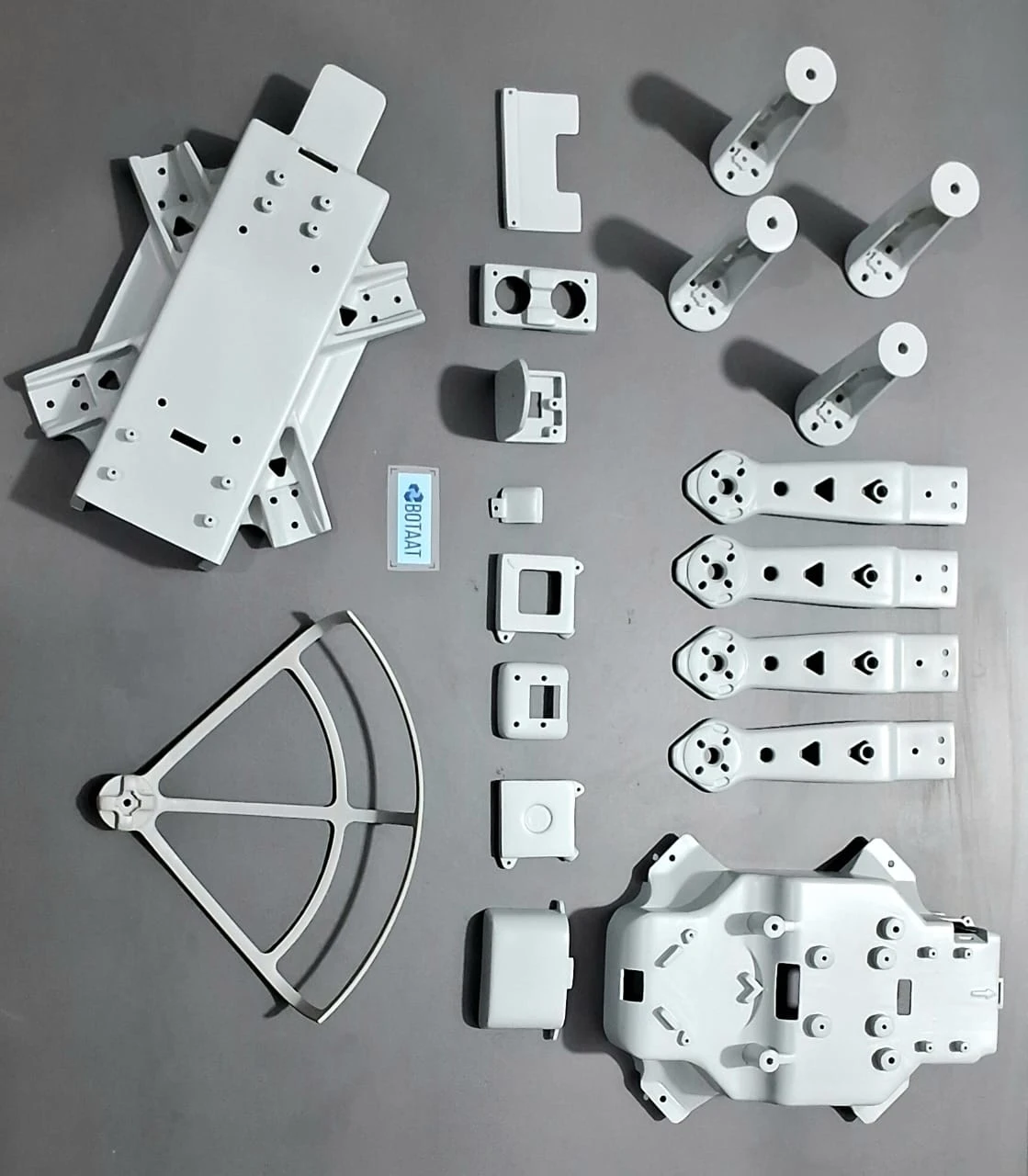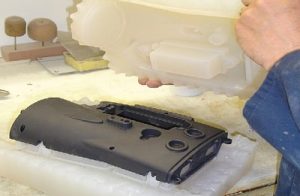Enquiry
Rapid prototyping
Rapid prototyping is a fast and efficient process that brings product ideas to life. Using advanced manufacturing techniques, such as 3D printing, CNC machining, and vacuum casting, rapid prototyping allows designers and engineers to create physical models of their products in a fraction of the time and cost.

Prototype services
Botaat is a reliable partner you can count on to produce high-quality, low-cost prototypes, and make your designs real product in a few days.
Customers rely on Botaat for high-quality, quick-turnaround, and cost-effective rapid prototyping services.
To accelerate development and reduce production costs to create agility throughout your product life cycle.
Please send your CAD file to our engineers for a free quote, and select the process that best meets your requirements.
Customers rely on Botaat for high-quality, quick-turnaround, and cost-effective rapid prototyping services.
To accelerate development and reduce production costs to create agility throughout your product life cycle.
Please send your CAD file to our engineers for a free quote, and select the process that best meets your requirements.

Advantages of Rapid Prototyping
Before going into production, test the market for your product.
Identify and eliminate design defects to save time and money.
Streamline and improve the manufacturing process.
Identify and eliminate design defects to save time and money.
Streamline and improve the manufacturing process.

Rapid Prototyping Applications
Consumer electronics, household appliances, toys
Automotive Industry, interior components
Aerospace Engineering
Medical Devices and Implants, customized prosthetics, and surgical tools, dental crowns, hearing aids.
Automotive Industry, interior components
Aerospace Engineering
Medical Devices and Implants, customized prosthetics, and surgical tools, dental crowns, hearing aids.
What is Rapid Prototying ?
Rapid prototyping is used to quickly create functional prototypes. It uses 3D printing, CNC machining, vacuum casting, or sheet metal farbricating to produce prototypes rapidly. These prototypes help in testing and refining product designs before moving to mass production.
3D Printing (SLS & SLA)
SLA (Stereo Lithography) and SLS (Selective Laser Sintering) are two types of 3D printing manufacturing technology to create plastic models, functional prototypes. These processes are rapid and allow you to create sophisticated internal features that would be impossible to achieve using traditional manufacturing techniques. SLA is ideal for making small volumes of prototypes, and we use SLA to make master patterns for vacuum casting models.
Parts made of 3D printing are inadequate in strength and is easily broken, and are likely to deform in high-temperature.
Parts made of 3D printing are inadequate in strength and is easily broken, and are likely to deform in high-temperature.

Vacuum Casting
Polyurethane vacuum casting is used to create a duplicate of your master pattern.
Materials: ABS, PP, Nylon, Rubber, and transparent.
ABS and other engineering plastics.
Finishing: Painting, As Casted
Shrinkage: 0.15% – 0.3%
Materials: ABS, PP, Nylon, Rubber, and transparent.
ABS and other engineering plastics.
Finishing: Painting, As Casted
Shrinkage: 0.15% – 0.3%
CNC Machining Prototype
Parts will achieve tighter tolerances with a smooth surface without investing in expensive tooling.
Process: 3 axis, 4 axis, 5 axis Milling, Turning
Materials: Plastic (ABS, PMMA, PP, PC, POM, PA, bakelite) .
Metals (aluminum, copper, steel, stainless steel, etc).
Process: 3 axis, 4 axis, 5 axis Milling, Turning
Materials: Plastic (ABS, PMMA, PP, PC, POM, PA, bakelite) .
Metals (aluminum, copper, steel, stainless steel, etc).
Sheet Metal Prototyping
Sheet metal prototyping involves cutting, bending, stamping and sometimes welding thin metal sheets into desired shapes.
Processes: Laser Cutting, Waterjet Cutting, Bending, Stamping, Punching Welding.
Materials: Aluminum 5052, Steel (Stainless or Mild), Copper and Brass
Finishing: Deburring, Polishing, Powder Coating, Painting, Anodizing, Galvanizing, Plating, Bead Blasting, Brushing.
Processes: Laser Cutting, Waterjet Cutting, Bending, Stamping, Punching Welding.
Materials: Aluminum 5052, Steel (Stainless or Mild), Copper and Brass
Finishing: Deburring, Polishing, Powder Coating, Painting, Anodizing, Galvanizing, Plating, Bead Blasting, Brushing.
Plastic
A plastic prototype made by 3D printing, urethane casting or CNC machining is the most common and economic way to review the appearance and function of your design.


Metal
Metal prototypes and parts are typically created through CNC machining, sheet metal fabrication or die casting. Common metals include aluminum, magnesium, steel, brass, copper, etc.




